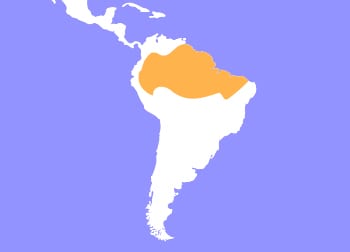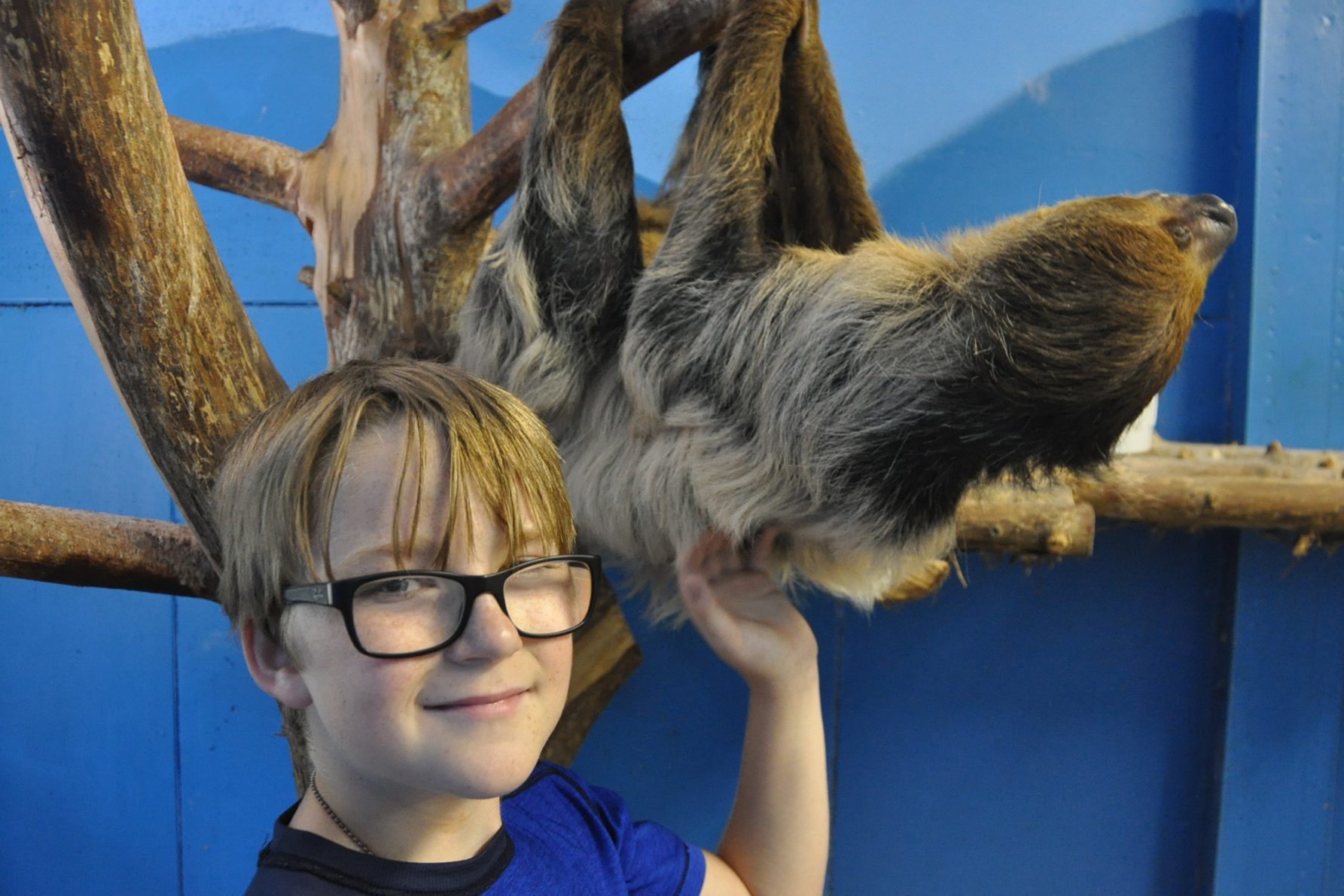Two Toed Sloth
Choloepus didactylus
The two toed sloth can be broken down into two sub species of sloths, Linnaeus’s two-toed sloth and Hoffmann’s two-toed sloth. Through molecular studies, results show these sloths to be the closest relative of the extinct ground sloths of the Mulondontidae family, they lived up to 11 thousand years ago! The name “two-toed” sloth was intended to describe the anatomical difference between the genera Choloepus and Bradypus. This has been seen as somewhat misleading, with members of Choloepus having two toes on their forelimbs and three on their hindlimbs, while members of Bradypus have three toes on all limbs. On average they are between 2 - 2.5 feet long, weighing between 10 - 20 pounds. Other distinguishing characteristics include a prominent snout, long fur, and the absence of a tail. Their fur grows in the opposite direction of most mammals, due to the fact they live their lives upside down!
Most of their lives are spent hanging upside down from trees. They cannot walk, so they maneuver by pulling hand-over-hand in the trees, which can be a at a pretty slow rate. Two toed sloths are mostly nocturnal, being active during the evening and sleeping during the day. Their long fur will grow greenish algae which helps it blend into its environment, which is their main source of protection. They eat primarily leaves, shoots, fruits, nuts, berries, bark, native flowers, and sometimes small vertebrates.

Two Toe Sloths are native to South America, ranging from Venezuela to Brazil, north of the Amazon River.
HABITAT -They are arboreal animals, living in the trees and forests of South America.
DIET -They are omnivorous, eating primarily leaves, shoots, and fruits. Sometimes they will eat small vertebrates.
FUN FACT -Mother sloths will give birth to a single young, while hanging upside down!
SOCIAL BEHAVIOR -Male sloths are solitary animals, female sloths sometimes congregate together.
ACTIVITY -Two-toed sloths are mostly nocturnal, being active during the evening and sleeping during the day.
PREDATORS -Predators include the jaguar, the harpy eagle, and humans.
SIZE -On average they are between 2 - 2.5 feet long, weighing between 10 - 20 pounds.
RELATIVES -The closest relatives of sloths include anteaters and armadillos.
CONSERVATION -Two toed sloths are categorized as LC (Least Concern) species by the IUCN.
Cub Creek Animal Care Information
Housing - Our two toed sloths inhabit a specialized enclosure giving them plenty of room to explore around. You’ll find tree branches and trunks throughout the enclosure to give them a simulated canopy environment. The tree branches also extend outside of their enclosure to allow for more exploration. They have crates that they use as hides within the trees, they can be found lounging here most days. The enclosure is bedded with shavings, and they always have access to clean water.
Diet - We feed our two toed sloths a balanced diet that starts with primarily fruit! They love to eat apples, bananas, and other sweet treats. We also supplement this with a variety of vegetables and greens, sweet potato, etc. Sometimes they get special treats like friend chips or mangoes!
Enrichment - Our two toed sloths get plenty of time, love, and affection by our animal team and campers! They are very accustomed to human interaction, and are very curious and playful, especially when bananas or monkey biscuits are involved! Campers will make them special enrichment toys during the summertime as well, these are usually made from cardboard and hang from the trees. Campers will also make them special fruit treats like frozen popsicles!


